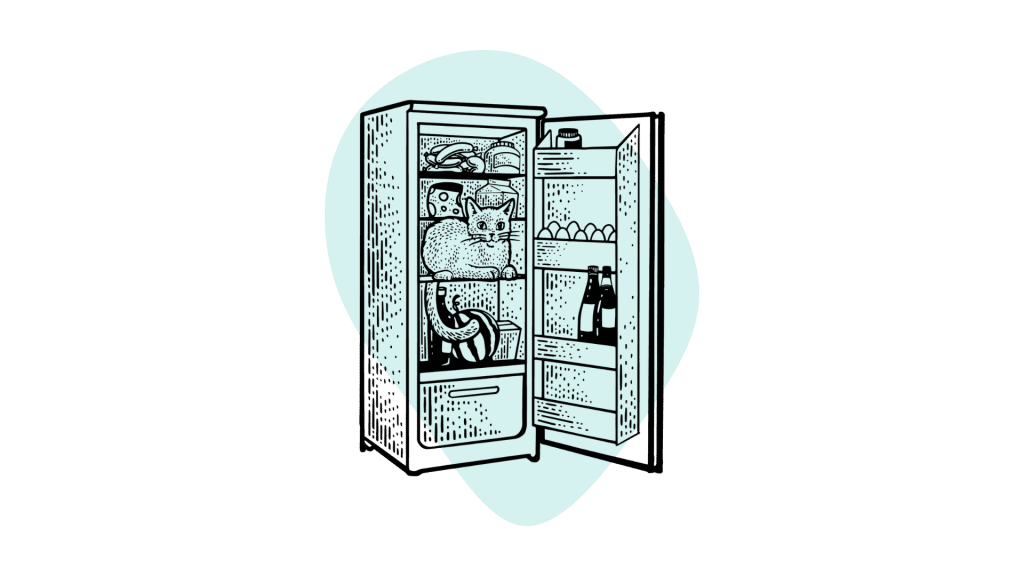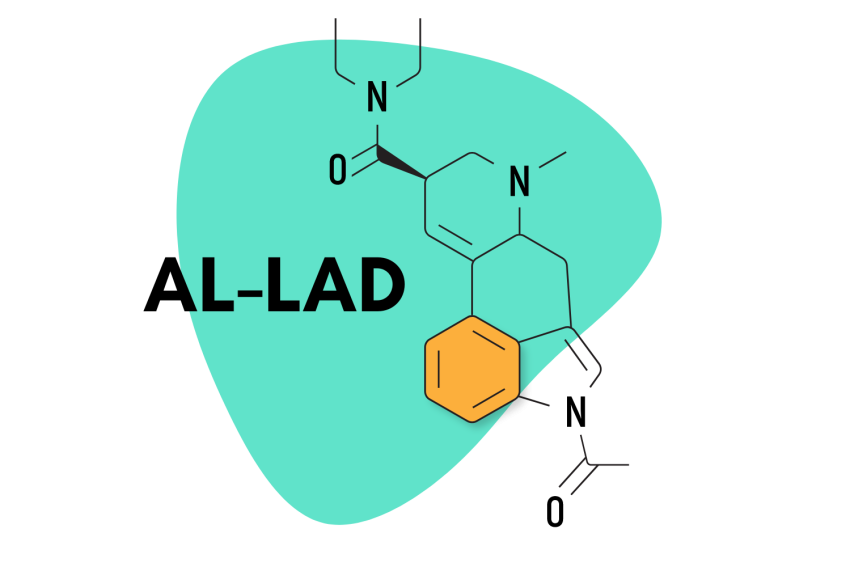How to Store LSD (What’s The Shelf-Life of LSD?)

Lysergic acid diethylamide (LSD) is one of the most potent psychedelic drugs known to humans.
Unfortunately, it doesn’t have great stability and will deteriorate and lose potency if it isn’t stored in ideal conditions.
In this guide, you’ll learn why LSD loses potency over time, how long you can expect yours to last, and some tips for consuming old LSD.
You’ll also learn the best possible storage methods for the different types of LSD for both short-term and long-term storage.
Key Takeaways
In case you’re in a hurry, below is a brief breakdown of how to store LSD properly:
- Store blotter paper tightly in tinfoil, seal in an air-tight container, and place in the freezer for long-term storage.
- Store liquid LSD, in a glass bottle wrapped in a protective material and leave in the freezer or fridge.
- Store LSD sugar cubes in an air-tight container and put them in the fridge or freezer.
- Store LSD microdots the same way as blotter paper.
Does LSD Lose Potency?
Yes, LSD will become less potent over time.
The rate of deterioration will depend on how it’s stored. Heat, humidity, and UV light will all cause LSD to break down more quickly.
Even if LSD is stored in perfect conditions, it will eventually break down and become less potent.

How Long Does LSD Last? (Shelf-Life of Acid)
LSD can degrade significantly in as little as a few days, or it can last and retain its potency for 2 or 3 years.
After 3 years, the acid won’t go bad, it just won’t be as potent. By the 5-year mark, it’s unlikely for a single tab of acid to have much effect, but two or three could still obtain enough of the active ingredient for a powerful acid trip.
If stored incorrectly (not in an airtight container, in a pocket or wallet, etc.) don’t expect your acid to last more than about 2 or 3 months before the potency drops off enough to no longer feel it.
If your acid is exposed to extended periods of heat or light — such as leaving it in your hot car for the day — it’s likely the acid will already have degraded enough to no longer remain active.
At room temperature with no precautions taken to protect the acid:
- Blotter paper will usually retain its potency for 4-6 weeks
- Liquid LSD in a clear dropper may only last about a week
- Microdots will often retain potency for 4-6 weeks
- Sugar cubes naturally resist moisture and can last about 6-8 weeks or more
These timelines are based on the acid being exposed to UV light, heat, moisture, and ambient air.
If all precautions described above are taken, and you use your freezer for long-term storage, you can expect:
- Blotter paper to last for 2-3 years in the freezer
- Liquid LSD to last for 1-2 years in the freezer
- Microdots to last for 2-3 years in the freezer
- Sugar cubes to last for 1–3 years in the freezer
Is It Safe to Take Old LSD?
Acid doesn’t go bad when it expires. It’s not going to make you sick or cause any new adverse reactions — it just doesn’t work.
It’s safe to take old acid, but be careful not to take too much, thinking it’s no longer active. This is the most dangerous aspect of using old acid.
Follow the same safety protocols as new acid — take one dose and wait a full hour and a half to assess whether it’s working or not. Be patient. If it isn’t working by then, take another half and repeat.
Don’t assume the acid isn’t working because it’s old and drop numerous tabs at once.
How Should I Store LSD?
The best storage method for your LSD depends on the form of acid you’re looking to protect.
Blotter Paper or Tabs
Blotter paper is the most common delivery method for LSD, but it can degrade in a few months or even weeks if not stored appropriately.
First, wrap your tabs tightly in tinfoil. This will help protect them from UV light and limit the amount of moisture that can interact with the acid.
Next, place your wrapped tabs in an air-tight container and seal it. This will help keep your tabs safe from the outside air. A Ziploc freezer bag or air-tight Tupperware container will suffice.
Next, place your container in the fridge for short-term storage or freezer for long-term storage to prevent degradation from heat.
This method of storage should keep your LSD potent for years if done correctly. Just make sure to let the container come down to room temperature before opening it. Breaking the air-tight seal too early can cause condensation to form, which can damage your LSD.
Liquid LSD
Liquid LSD is the preferred delivery method for many users, but it’s often a challenge to store appropriately. It usually comes in a glass container that needs to be insulated and protected to prevent the glass from breaking. You can opt for foam or cloth to protect it from physical damage.
Next, place the insulated dropper in an air-tight container, and put it in the fridge for short-term storage — several weeks — or the freezer to store for more extended periods — a few months.
Just like with blotter paper, make sure to let the vial come down to room temperature before opening the air-tight container.
Even in optimal conditions, liquid LSD won’t last as long as other delivery methods. The best option is to dose blotter paper using the liquid LSD and store the tabs instead.
Microdots
Microdots are now a rare delivery method for LSD, but they’re relatively easy to store. The process is similar to blotter paper: wrap in tinfoil, seal in an air-tight container, and place in the freezer for storage for up to several years.
Sugar Cubes
Sugar acts as a natural deterrent for moisture, so LSD sugar cubes are a bit easier to store than other forms. You likely won’t need an air-tight container for sugar cubes, but it’s still recommended for the best results.
Wrap each sugar cube in tinfoil to protect the acid from UV light, and place them carefully in a container before putting them in the freezer or fridge.
Letting sugar cubes drop to room temperature before use is best, but the LSD’s potency won’t be as affected as it would with other delivery methods.
Related: How to store magic mushrooms.

Key Takeaways: What’s the Best Way to Store LSD?
Lysergic acid diethylamide (LSD) is a highly potent psychedelic that most users take sparingly and infrequently. As such, storing LSD is often required, but the drug can lose potency somewhat rapidly in poor storage conditions. Heat, air, moisture, and UV light can all degrade LSD.
The best storage method depends on the type of LSD you have. Generally, you want to wrap your acid in tin foil to protect from moisture and light, place it in an air-tight container, and then store it in the fridge for short-term storage or the freezer for long-term storage.
Even if your LSD is stored in poor conditions, never assume that it’s safe to take multiple hits. This is an easy way to take too much, making a bad experience more likely.
Sources Used
- Li, Z., McNally, A., Wang, H., & Salamone, S. J. (1998). Stability study of LSD under various storage conditions. Journal of analytical toxicology, 22(6), 520-525.
- Baquiran, M., & Al Khalili, Y. (2020). Lysergic Acid Diethylamide Toxicity.








